A Cellular Taxonomy of the Bone Marrow Stroma in Homeostasis and Leukemia
- PMID: 31130381
- PMCID: PMC6570562
- DOI: 10.1016/j.cell.2019.04.040
A Cellular Taxonomy of the Bone Marrow Stroma in Homeostasis and Leukemia
Abstract
Stroma is a poorly defined non-parenchymal component of virtually every organ with key roles in organ development, homeostasis, and repair. Studies of the bone marrow stroma have defined individual populations in the stem cell niche regulating hematopoietic regeneration and capable of initiating leukemia. Here, we use single-cell RNA sequencing (scRNA-seq) to define a cellular taxonomy of the mouse bone marrow stroma and its perturbation by malignancy. We identified seventeen stromal subsets expressing distinct hematopoietic regulatory genes spanning new fibroblastic and osteoblastic subpopulations including distinct osteoblast differentiation trajectories. Emerging acute myeloid leukemia impaired mesenchymal osteogenic differentiation and reduced regulatory molecules necessary for normal hematopoiesis. These data suggest that tissue stroma responds to malignant cells by disadvantaging normal parenchymal cells. Our taxonomy of the stromal compartment provides a comprehensive bone marrow cell census and experimental support for cancer cell crosstalk with specific stromal elements to impair normal tissue function and thereby enable emergent cancer.
Keywords: bone marrow niche; hematopoiesis; leukemia; single-cell RNA-sequencing; stem cell; stroma; tumor microenvironment.
Copyright © 2019 Elsevier Inc. All rights reserved.
Conflict of interest statement
Declaration of Interests
D.T.S., director and shareholder of Magenta Therapeutics, Agios Pharmaceuticals, Editas Medicines, Clear Creek Bio, Red Oak Medicines and LifeVaultBio; a shareholder of Fate Therapeutics, a consultant for Magenta Therapeutics, Clear Creek Bio, Red Oak Medicines, VCanBio and a SAB member of FOG Pharma. A.R., a founder and equity holder of Celsius Therapeutics; a member of the SAB for ThermoFisher Scientific and Syros Pharmaceuticals. M.S.K., employed by Celsius Therapeutics. The authors have filed for patent (62/808,177).
Figures
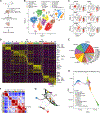
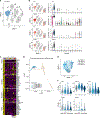
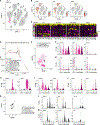

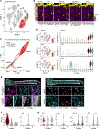

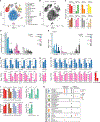
Comment in
-
Mapping dysfunction of the bone marrow stroma in leukaemia.Nat Rev Cancer. 2019 Jul;19(7):368. doi: 10.1038/s41568-019-0165-1. Nat Rev Cancer. 2019. PMID: 31171856 No abstract available.
-
Beginning of a New Era: Mapping the Bone Marrow Niche.Cell. 2019 Jun 13;177(7):1679-1681. doi: 10.1016/j.cell.2019.05.042. Cell. 2019. PMID: 31199915
References
-
- Abdallah BM, Al-Shammary A, Skagen P, Abu Dawud R, Adjaye J, Aldahmash A, and Kassem M (2015). CD34 defines an osteoprogenitor cell population in mouse bone marrow stromal cells. Stem cell research 15, 449–458. - PubMed
-
- Angerer P, Haghverdi L, Buttner M, Theis FJ, Marr C, and Buettner F (2016). destiny: diffusion maps for large-scale single-cell data in R. Bioinformatics 32, 1241–1243. - PubMed
-
- Arai F, Hirao A, Ohmura M, Sato H, Matsuoka S, Takubo K, Ito K, Koh GY, and Suda T (2004). Tie2/angiopoietin-1 signaling regulates hematopoietic stem cell quiescence in the bone marrow niche. Cell 118, 149–161. - PubMed
Publication types
MeSH terms
Grants and funding
LinkOut - more resources
Full Text Sources
Other Literature Sources
Medical
Molecular Biology Databases

